The 12 Most Common Types of Door Locks
Choose from 12 types of household door locks designed for exterior and interior doors
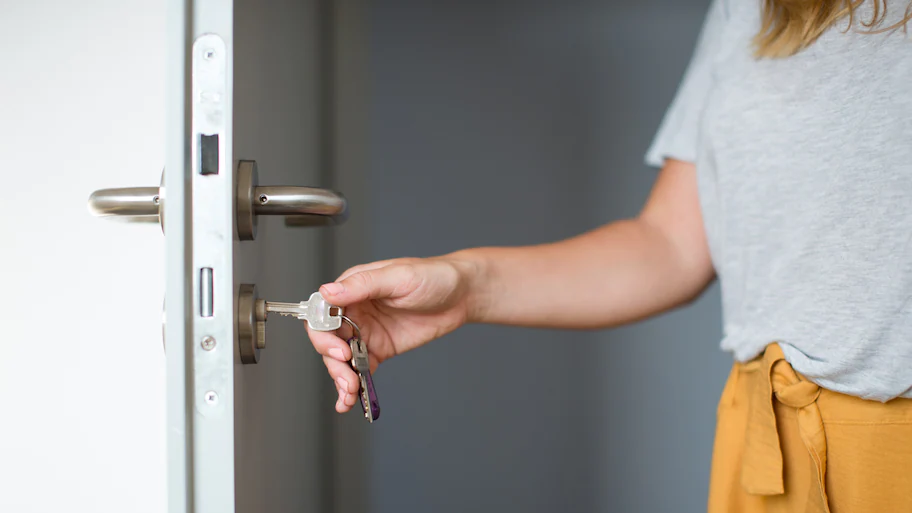

Your home is your castle, and there are various locks to keep it safe. There are various door locks to choose from, and sometimes it’s not immediately obvious which is right for each type of door. This guide covers 12 types of door locks, including cylinder, hand levers, dead bolts, sliding door, barrel, mortise, and smart locks.
1. Entry Doorknobs

A doorknob lock is one of the most common ones you'll find. As the name implies, it's simply the knob that attaches to the door with a keyhole in the middle. You insert the key into this keyhole and turn to unlock the door. You'll often see them used in combination with a dead bolt or chain lock for extra layers of security.
Best for: Exterior doors or any other primary point of entry
Pros:
Easy to operate
Can fit in with almost any design aesthetic
Cons:
Takes valuable time to unlock during an emergency
Keys can become worn out or bent
2. Cylinder Locks
A cylinder lock is the basic locking mechanism for a dead bolt lock. It contains a series of pins that have to align just right for the door to lock or unlock. The proper key will move the pins into the correct position, allowing it to turn and move the dead bolt.
Best for: Added security for exterior doors
Pros:
Will help secure the door even if the doorknob lock isn’t engaged
Difficult to pick
Cons:
Doesn’t provide complete protection from break-ins
Door must be aligned correctly for the dead bolt to slide into place
3. Hand Levers

A hand lever functions in a similar way as a doorknob, but with a lever that you push down instead of a knob that you turn. Similarly, it has a keyhole in the middle. However, you won't see this type of lock on exterior doors as much because they aren't as secure as knobs. It's better for interior rooms where you want quick and easy entry.
Best for: Interior rooms you want to keep secure, like a manager's office in an office building
Pros:
Offers easier access to entry
Simple enough for most household members to operate
Cons:
Doesn’t offer as much security as some other locks
Objects or clothing can accidentally catch on it
4. Lever Handlesets
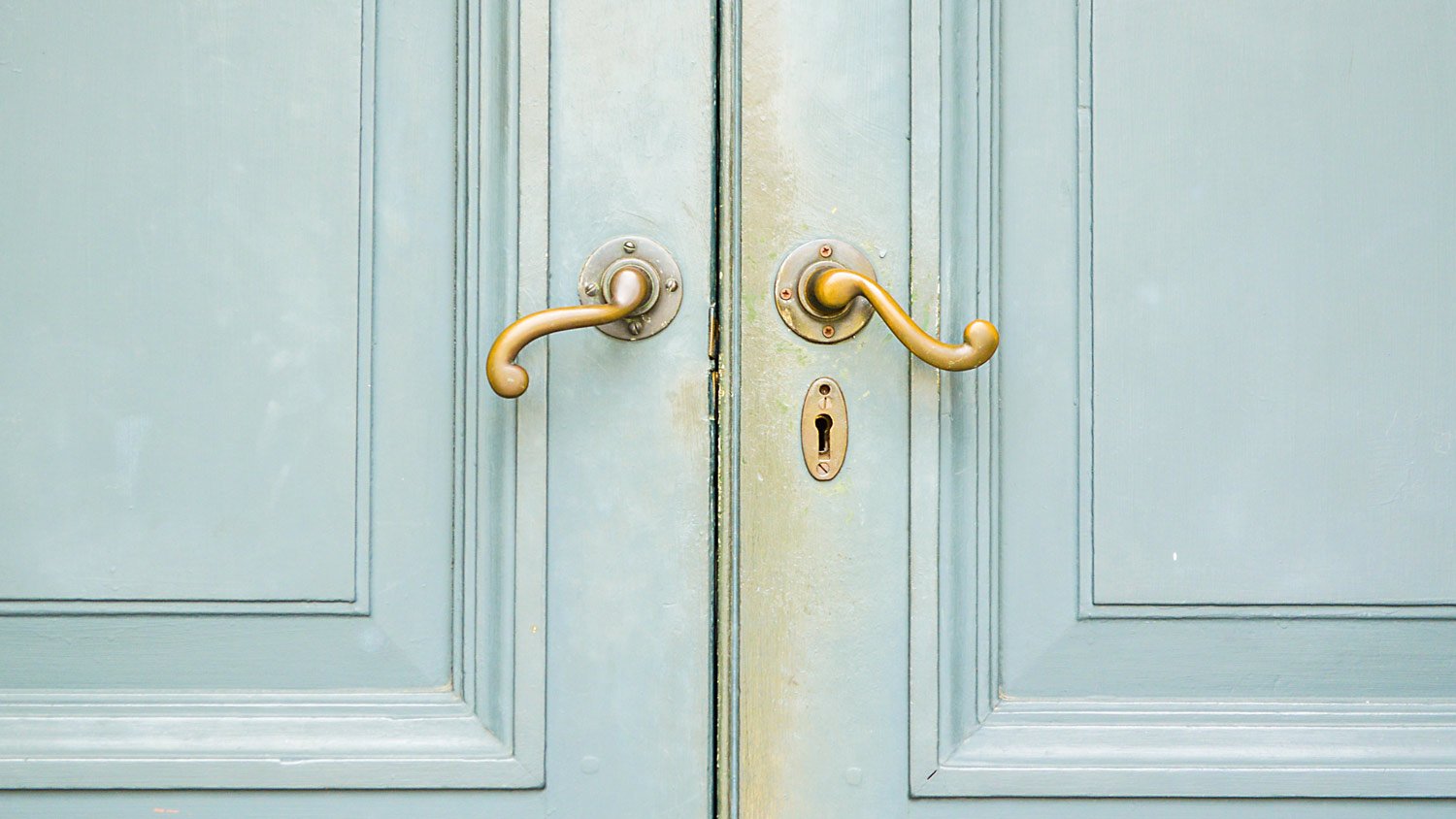
Lever handlesets are a common choice for exterior front doors because of their elegant style and security. They feature a long handle and a thumb lever just above it, which you press down on to open the door after unlocking it. They typically work in tandem with a dead bolt.
Best for: Exterior front entry doors
Pros:
Can add to the overall design of the exterior door
Adds extra security to exterior doors
Cons:
More difficult to operate
Requires a separate dead bolt
5. Dead Bolts

Dead bolts are not usually the primary lock on a door since they don't feature a handle you can use to open the door once it's unlocked. Instead, they offer an extra layer of security by putting a metal bar into the doorframe when locked, making it extremely difficult for the door to be broken into even if an intruder can get the knob unlocked. As a result, these are almost always used on exterior doors. Installing dead bolts is relatively inexpensive.
Best for: Exterior doors that already use a knob or hand lever
Pros:
Easy and inexpensive to install
Simple operation (only requires a single turn)
Extra layer of security against break-ins
Cons:
Not all dead bolt locks protect against intrusions
Require a manual engagement
Take longer to engage, which can be an issue during an emergency
6. Electronic Door Locks or Smart Locks

Electronic door locks and "smart" locks are either keyed or keyless locks that are less mechanical and more technological. They may have a keyhole, a numbered keypad for an entry code, or a scanner so you can swipe and enter. They’re a good option for homeowners who desire convenience or if you want to grant access to relatives, guests, or contractors without having to leave a key under the mat.
Best for: Exterior doors, particularly ones that outsiders often use
Pros:
Can provide a higher level of security
Anyone in the household can operate it if they can input a code
Easier to set up and delete passwords for entry
Cons:
Some depend on Wi-Fi or Bluetooth for a power source
Can be subject to hacking
More expensive than other locks
7. Cam Locks
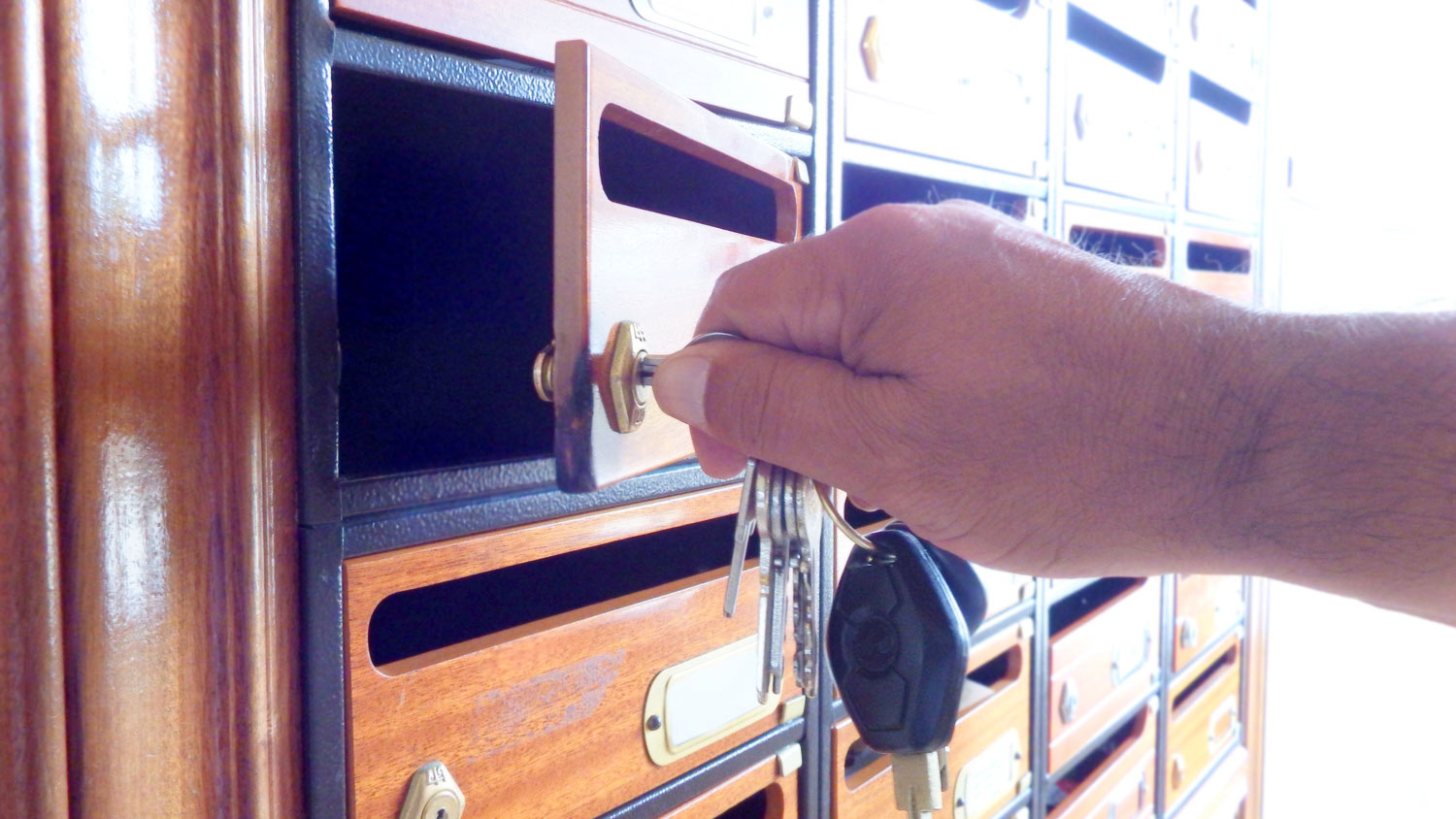
Cam locks are simple locks often found in cabinets or U.S. Postal Service mailboxes. Using a small key, you turn a metal piece within the lock to prevent a door or drawer from being opened.
Best for: Small doors and drawers with low security, like cabinets and mailboxes
Pros:
Offer easy operation for small spaces
Simple to install
Cons:
Doesn’t offer as much security as a dead bolt
Small key can be difficult to keep track of
8. Sliding Door Locks
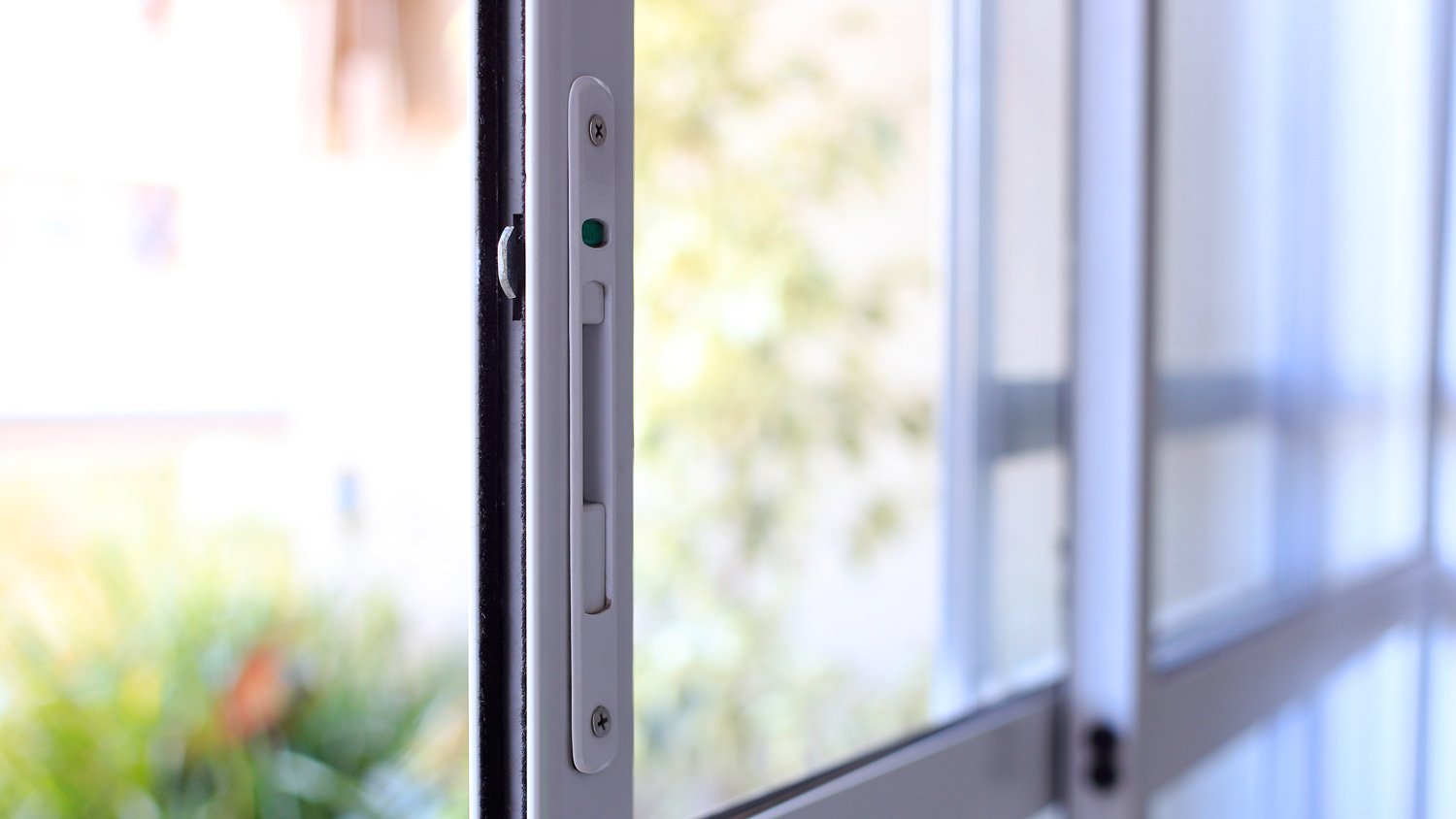
As the name implies, this type of lock exclusively secures sliding doors. It's a simple lock that you push to the side to secure the door. This causes a latch to come up and hold the door in place at the frame. It doesn't provide much security, but it will keep your sliding doors more secure.
Best for: Exterior sliding doors
Pros:
Easy operation for almost everyone in the household
Comes factory-installed
Cons:
Doesn’t provide much security
Easily picked by would-be intruders
9. Barrel Bolt
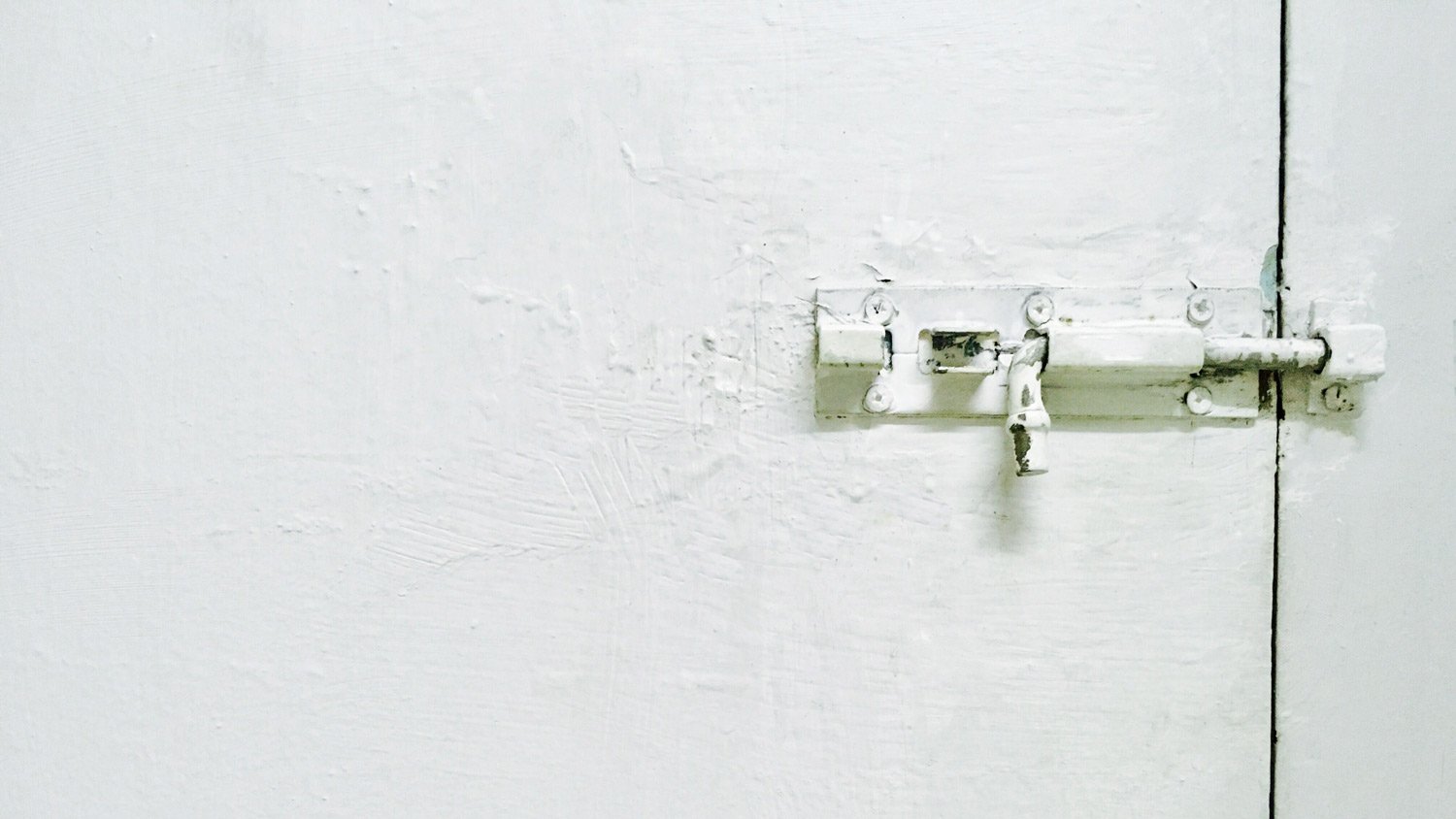
A barrel bolt, or sliding bolt, can be found inside doors and adds another layer of security. However, a barrel bolt isn’t as sturdy as a dead bolt and can be broken more easily with brute force. It uses a cylindrical lock that you slide into place from the inside after closing the door.
Best for: Exterior doors as a second layer of security
Pros:
Simple operation and installation
Inexpensive compared to most other locks
Cons:
Doesn’t provide as much security as a dead bolt
Easily broken or knocked off
10. Chain Lock

A chain lock is often found on the inside of hotel rooms or apartments. It slides into place like a barrel bolt, but instead of using a bolt, it has a chain that stops the door from being opened, even if the doorknob and dead bolt are unlocked. This is usually used as a third layer of security after a doorknob and dead bolt, but it has to be unlatched from the inside.
Best for: Exterior doors as a third layer of security
Pros:
Less expensive than most other locks
Easy to install
Cons:
Not impossible to break
Cannot be operated from outside
11. Padlock

A simple padlock is rarely used on doors. Instead, they're used for securing lockers and storage unit doors. Padlocks aren't physically attached to what they're latching, so you can take them anywhere. They work by closing a loop around a solid object. Some are very small, and some can be quite large, depending on what objects you need to secure.
Best for: Lockers, storage units, sheds, fences, bicycles, and anything else without an installed lock that needs to be secured
Pros:
Inexpensive and easy to operate
Small enough to carry around
Cons:
Can be broken in a matter of seconds
Can easily get picked
12. Mortise Locks
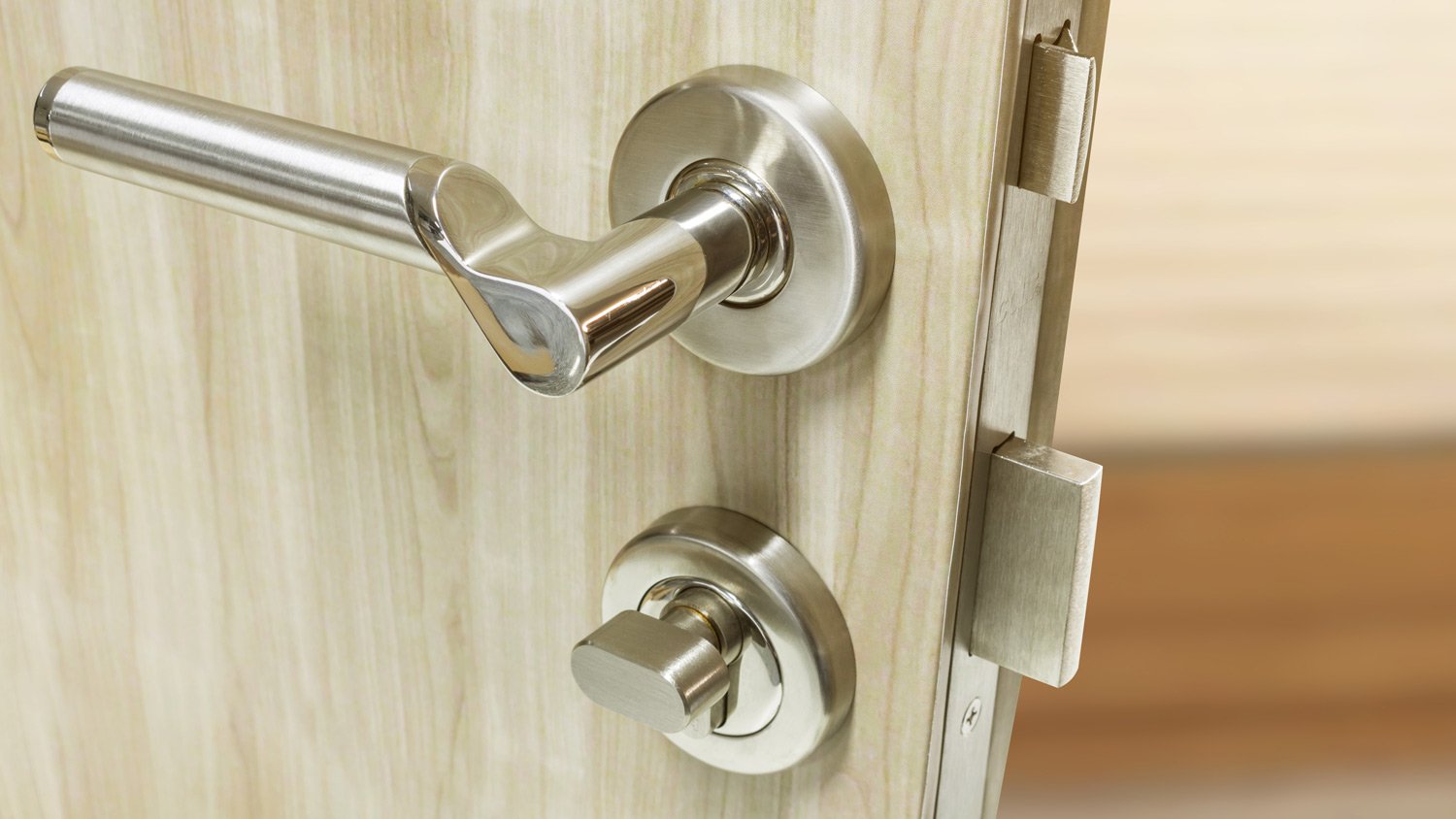
A mortise lock is set into the edge of the door opposite the hinge side and requires a “pocket” or a recess in the door itself. This allows the locking mechanism to slide into the door and sit flush against the edge. It’s most often used in commercial buildings and combines the dead bolt, latch, and door handle mechanisms in the case that slides into the door.
Best for: Commercial buildings that need a high level of security
Pros:
High level of security
The mechanism is encased in one unit
Cons:
More complex mechanism than other types of door locks
More difficult to install than other types
Types of Door Lock Grades
Each door lock is assigned a grade by the American National Standards Institute (ANSI) that indicates how durable it is and what type of construction it has. A strength test determines how much force a turning lock can withstand, and a cycle test determines how many times a lock can operate before it fails. The results of these tests assign a lock a grade:
| Grade | Strength in Pounds per Inch | Operation Cycles |
|---|---|---|
| 1 | 300 (key-in-knob) or 450 (lever lock) | 800,000 |
| 2 | 150 (key-in-knob) or 225 (lever lock) | 400,000 |
| 3 | 120 (key-in-knob) or 180 (lever lock) | 200,000 |
For the highest safety standards, look for a Grade 1 lock, but a Grade 2 can also mean it’s a durable, well-constructed lock.
Additional Considerations When Choosing a Door Lock
Choosing a door lock will often depend on the type of door you’re securing—you’ll choose a sliding door lock for a sliding door, for example. However, there are a few more considerations to take into account when deciding on a door lock.
Type of door: If you’re securing an exterior door, you may choose a doorknob lock and a dead bolt and add a chain lock or barrel bolt for additional security. If you’re securing an interior or sliding door, you can go with a lock that offers less security.
Accessibility: It can be difficult for some people to operate a round doorknob or lock a dead bolt. A lever handle is a more accessible style, so consider who will be using the door lock.
Backset measurement: When choosing a doorknob lock, you’ll need to check the backset measurement to make sure it matches your door. The backset measurement is the distance between the edge of the door and the center of the hole where the doorknob sits. If you change the lock on an existing door, you’ll already have this hole in your door, and most new doors come with these holes precut.
Cross bore: The cross bore is the hole that extends from the edge of the door through to the bore hole where the doorknob is installed. The standard cross bore hole is 1 inch in diameter.
Handing: Handing is the direction that the door will swing toward when installed, as well as the way the level handle will point when installed. Getting these correct will help you order the correct hardware.
Purpose: Your goal with adding a lock can help you narrow down a type. If you’re securing a cabinet, a cam lock may work just fine, but if you need a lock on a bathroom door, you may want to go with a doorknob lock or barrel bolt. Exterior doors need more security, so a dead bolt or electronic door lock may be the way to go.
Door levers are more user-friendly than knobs, and all handles must be installed between 34 and 48 inches above the floor. Hire a pro to ensure your home meets all accessibility standards.
DIY vs. Hiring a Pro: When to Hire a Locksmith
You can install some locks on your own, like a simple entry doorknob or chain lock, but other locks are complex mechanisms that require professional installation. That's especially true if you're getting something sophisticated like an electronic or smart lock.
Consult with a locksmith near you if you’re considering which locks to install in which parts of your house. They can explain the various types of locks for doors, the differences between the brands, their benefits and drawbacks, and how much you can expect to pay for each. A local door repair pro can help get your door, doorframe, and doorknob in working order if they need some TLC to stay secure.
How Much Do Locksmith Services Cost?
Locksmith services cost around $170 each time they come out, but the range could be anywhere from $50 to $400, depending on the service. Some types of locks are more expensive than others to install, and calling in a pro to unlock your door in an emergency will cost you plenty, especially if it’s after hours.
Frequently Asked Questions
Any type of dead bolt lock provides the highest level of safety for a single device. However, it’s also important to determine a lock's grade. Locks can come in either Grade 1, Grade 2, or Grade 3, which indicates how durable it is and if it’s constructed solidly. Safety experts recommend choosing locks based on Grade 1, which offers the highest level of durability.
There’s no set time limit for when you should replace your locks, but there are several indicators that it’s time to swap them. If you’re moving into a new home or have a roommate moving out, it’s smart to change the locks. If you experience a break-in or other crime, you should change it then too, or if you ever lose your keys. Eventually, locks can wear out, so it’s ideal to replace them after several years of use or one of these circumstances occurs.
The good news is that, yes, you can change locks yourself. Many people find it’s an easy DIY project that requires few tools and not much expense (depending on which lock you’re installing). If you have trouble with any part of an installation, you can always call a locksmith to help finish installing them.



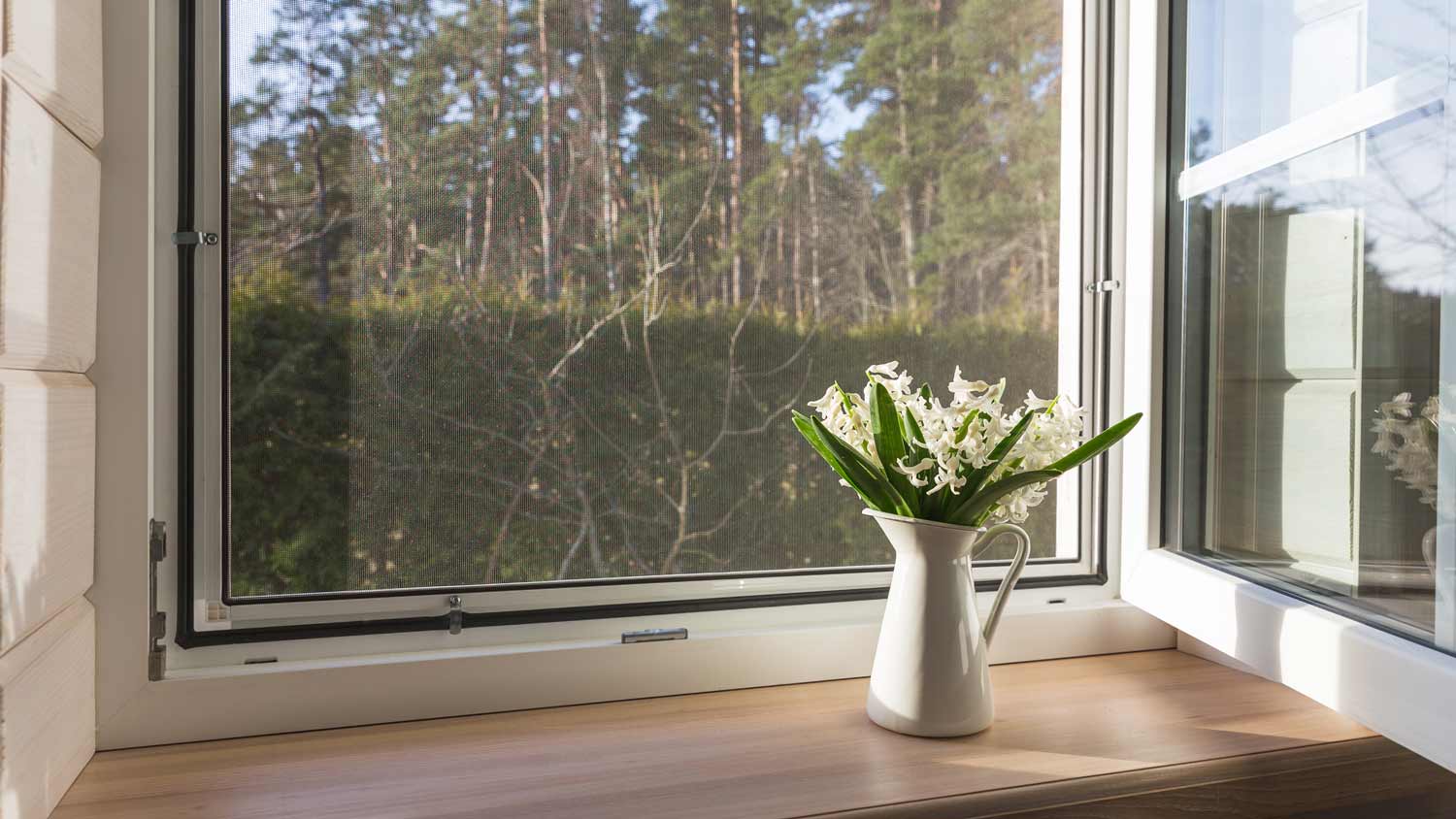

- How to Secure a Door Without a Lock While You Wait for a Locksmith
- How to Pick a Lock (And When It's Time to Call a Locksmith)
- How to Reinforce a Door to Increase Home Security
- 10 Types of Doorknobs: Which One Is Right for You?
- 5 Common Signs Your Locks Have Been Tampered With and What to Do About It
- How to Secure a Sliding Glass Door: Full Guide
- 8 Door Lock Maintenance Tips to Keep Your Home Secure
- All the Parts of a Door: The Homeowner’s Guide
- 9 Ways to Fix a Key That’s Not Turning in a Lock
- Should You Change the Locks on a New House?











